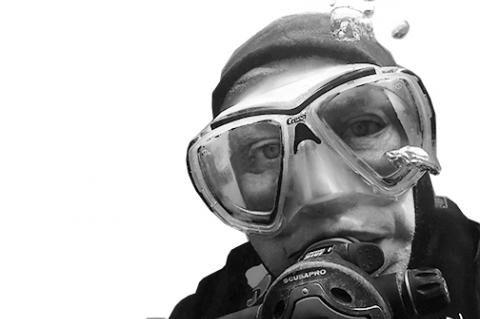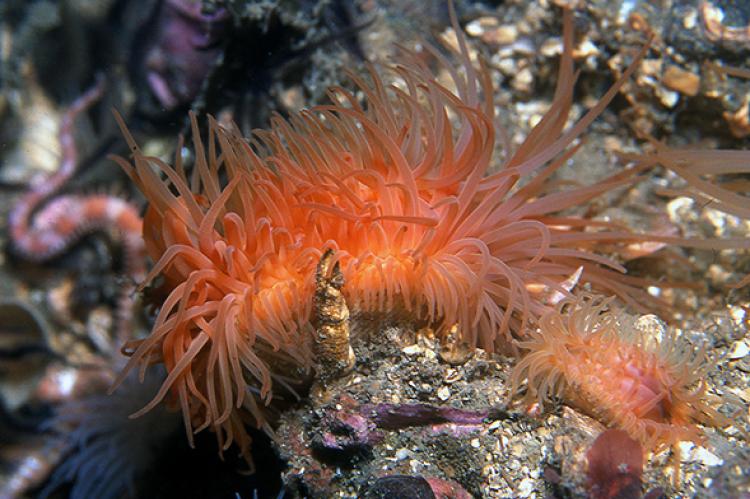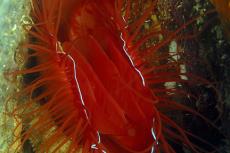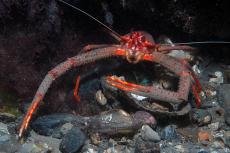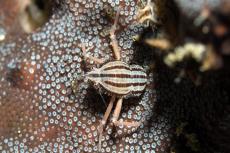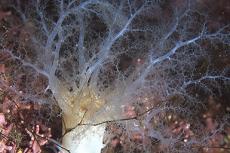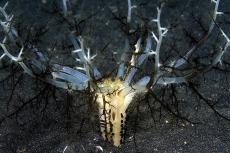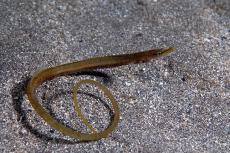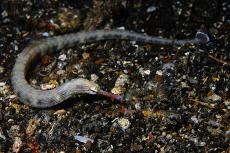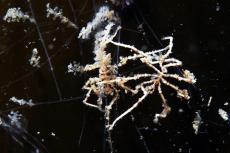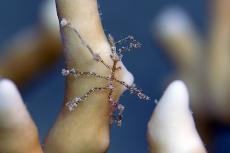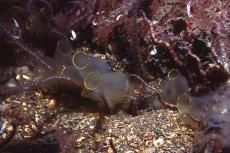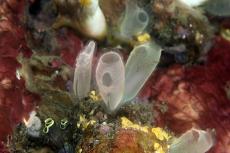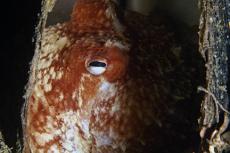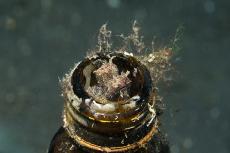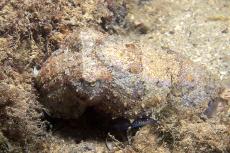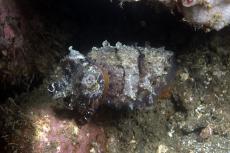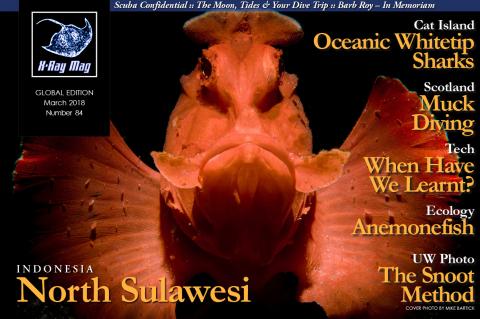Scotland: Muck Diving at Home
Do we really need to go underwater at the other end of the world (and its challenges)? Lawson Wood poses this question while comparing the muck diving found in his home country of Scotland to that found in exotic locations in Asia and other regions of the world, renown for their muck diving sites.
Tags & Taxonomy
“Muck diving” is now a recognised, broad term for (generally) close-up and macro or micro photography, often in terrible visibility, resulting in low light and backscatter problems in photographs; and some disorientation with depth, resulting in finding deep-water critters in much shallower water due to the cut in natural light.
As the name implies, you are searching in a “mucky” or “murky” environment, moving slowly with additional lights to try and spot all of the weird and wonderful creatures that we tend to miss in the search for larger, weird and wonderful creatures. Do not let the term “muck diving” fool you; it is one of the best and most rewarding diving and underwater photography trips that you can do to obtain quite unique photographs in probably the most unhurried dive profile style you will ever have. This form of scuba diving and underwater photography encompasses all of your skills, particularly buoyancy, as you will be working close to the seabed, if not on it. By its very nature, the muck does get everywhere, and special care must be taken with cleaning all of your equipment after every dive.
Diving protocol
Consideration must also be taken with all of the critters that inhabit this environment, particularly if you are settling on the seabed. Always make sure that the area beneath you is clear and critter-less. Always remember that your diving buddy may be following in your fin strokes, so you may actually make the visibility worse and spoil the experience for your buddy for your own selfish gain. Also check which way the current is flowing, as you may actually spoil your own photographs. So, try and orient yourself facing into the current.
It is only in the last ten years or so that the term was first coined in the Lembeh Straits of Indonesia, and more specifically with the original staff of Kungkungan Bay Resort who discovered a wealth of hitherto rarely seen or unheard-of species in staggering numbers, hidden in the garbage-strewn seabed near a major seaport in northern Sulawesi, Indonesia. Deciding to do an “eco” clean-up of the seabed, the developers discovered that the trash that they wanted to remove was already inhabited by all manner of weird and wonderful beasts.
However, many of us had already experienced forms of muck diving in places such as underneath the Town Pier and Salt Pier in Bonaire, Frederiksted Pier in St. Croix, Dodd Narrows off Vancouver Island, Tulamben Beach in northern Bali, Blue Heron Bridge in Florida, Papua New Guinea, and especially Loch Fyne in Scotland. Now, new and exciting areas such as Tasmania, Raja Ampat in Irian Jaya, Mabul Island in Malaysia, and many other exotic locations in the South China Sea have become popular.
Many would argue that muck diving was actually invented in Scotland, and now, as we have discovered and fully appreciate, muck diving need not be confined to tropical waters. I personally enjoy exploring the muddy depths of Loch Long, Loch Fyne and Oban in Scotland where I am able to find weird and exotically coloured dragonets, gobies, shrimps, starfish, sea cucumbers, molluscs and anemones (one of which I found to be the first ever record of the beast in British inshore waters).
Now, with many years of diving and underwater photography in all of the world’s oceans and over 50 books published on the topic, it is very apparent that there are massive similarities in marine species in all of our seas. So much so, in fact, that the parallels in critters being found at almost opposite ends of the globe give us an insight into the marvellous spread of marine life from the ancient Gondwanaland millions of years ago, to the land masses and far-reaching oceans that we have now.
Undoubtedly, the area of this original golden triangle is the centre of Indonesia—now referred to as Wallacea, after Alfred Wallace, the Scotsman whose work on natural selection was used by Darwin for his now world-famous treatise. Wallace discovered that there was a massive divide in distribution between the species of the Indian Ocean and Australasia, even when the waters were only a short distance apart. Yet, many of the species were actually distributed in most of the rest of the world’s tropical waters. Since the opening of both the Suez Canal and the Panama Canal, fostering the transmigration of species in the holds and on the hulls of the world’s supertankers, this big, wide world seems so much smaller nowadays.
Scottish challenges
I, and many others, know that there are weird and colourful critters in colder waters, but the finding and photographing of these creatures is also one of the main problems with which we have to deal. The Scottish sea lochs in the winter and spring have a lot of freshwater runoff, which lies as a thick layer of dark-stained, peaty water, cutting out virtually all available light into the depths, similar to the fjords in southern New Zealand or southwestern Tasmania. Every dive can be a night dive, and additional lights are always necessary to make life a bit easier. Unlike the oftentimes poor visibility in tropical waters muck diving, the Scottish sea lochs in winter are usually crystal clear once you get below the peat-stained, freshwater halocline.
Loch Long. The Scottish sea lochs are known for their steeply sloping muddy inclines, which drop well below the safe scuba diving limit. The eastern shore of Loch Long is fairly featureless, except for a couple of places where the bare rock strata juts into the loch, creating small caves and crevices for squat lobsters, conger eels and small blennies. The uniform muddy slope has sea cucumbers, scallops, various species of crab, squat lobsters, dragonets and burrowing anemones.
Loch Fyne. The next sea loch over to the west is Loch Fyne, which has very similar topography. It also has Inverary Pier, where a night dive amidst the old harbour trash is essential. Pipefish, nudibranchs, brilliant anemones, octopuses, starfish and various shrimps are all evident. As the dive depth is only around 7m (23ft) at high tide, you have plenty of time to explore and photograph amazing critters to your heart’s content.
Oban. Down the small slipway opposite Puffin Dive Centre in Oban is another great mucky, rummage dive, usually dived by newbie trainee divers. Spider crabs, various snails, small queen scallops, camouflaged spider crabs, burrowing anemones and sea cucumbers—which are very similar, in fact, to an almost identical species found in Indonesia or the Caribbean.
Isle of Skye. Farther north, into the sea lochs around the Isle of Skye, there are huge fireworks anemones, langoustine (scampi prawns), three different species of sea pen, individual coral polyps, small sea fans, fire clams and colonial zoanthids, and amazingly—huge fields of an incredible, hard, calcareous algae called maerl (Phymatolithon calcareum) or “Scottish coral,” which creates a unique habitat for dozens of other marine species. This is absolutely unique in British waters, yet very similar to species and habitats found in tropical seas; most obvious are the true coral reefs.
Backscatter
Muck diving can, as the name suggests, be rather mucky and, as mentioned earlier, backscatter can be a problem, both in your own efforts as well as stirring up trouble for any other photographers following you. Backscatter is the major problem we all face in low visibility conditions. We either try to avoid it by getting in ultra-close, with skillful positioning of flash and extended arms, or do as I do—I like to use it as part of the photograph, and accept backscatter as a necessary element in the composition. In fact, in many instances, the addition of backscatter can enhance the composition.
Where to muck dive
You can really go muck diving anywhere. One of the best locations is under piers, new or old. Old ones are always well encrusted with marine life, but new ones are equally as exciting, as the seabed under them is always strewn with rubbish and builders' trash, which make perfect homes for little critters and fish. I once found a beautiful, little sea spider on a piece of old shopping basket under the new pier at the port on Cayman Brac in the Caribbean, virtually similar to that found off St. Abb’s Head in Scotland and Shag Rock in the Red Sea.
On these type of dives, what you are doing is a slowed-down version of macro photography, but with the option for seeing and photographing larger critters, should they come along. A friend of mine, Max Hillier, always used to say to students: “Stop and smell the roses.” Well, we are doing the equivalent underwater: Stop, slow down, and examine every single tiny little bit of sea floor, as something may well be hiding under it; eating something on top of it; hopping, crawling or walking over it; or swimming by, just minding their own business!
Muck diving, by far, is one of the most rewarding styles of diving and opportunities for underwater photography. The potential for discovering weird and wonderful critters is certainly higher than average. By slowing down, you will get so much more out of the dive experience. Thankfully, you do not need to travel to the other ends of the earth to experience all of these wonders. But should you do so, then the same rules apply in the search for those weird and wonderful critters, which are almost identical, no matter where you travel.
Muck diving etiquette
Remember that other photographers diving with you may also have spent a fair amount of money and time to reach their desired destination, and many can be quite aggressively eager to get as much—if not more—from the trip than anyone else. These same rules apply even if the dive site is just a short drive away from your home.
1. Do not monopolise a subject. The subject may be light sensitive and other divers may well be waiting in the sidelines to photograph the same subject, particularly if a guide has discovered this critter in the first place.
2. Do not intrude. If you find another photographer in the midst of a “shoot”, do not intrude on the scene. This is not only extremely bad manners, you may also spook the subject, and therefore, really annoy the other photographer. So, stay well away, have patience, and wait your turn—better still, find another subject nearby to be more individually productive rather than just copying someone else’s shot.
3. Be careful of your buoyancy at all times. Kicked-up particulates may drift away from you and can spoil someone else’s shot. Some areas have heavy sand or rocky substrates, but many have fine sand, or mud, which acts like waterborne talcum powder and gets absolutely everywhere. Treat your exit from a photo opportunity the same way you enter the scene—with great care, awareness and empathy of the critter and your fellow photographers.
4. Do not feed or handle critters. Many favourite locations for muck diving are also keen conservation areas and have strict rules of conduct, particularly about feeding or handling subjects. Unsurprisingly, you may find that some guides may be less than scrupulously subtle about inducing behavioural responses from subjects in the quest for greater kudos and gratuities. Please do not encourage this behaviour, as it totally makes a mockery of any conservation logic in place and should leave a rather sour taste when viewing your so-called hard-won photographs.
5. Never “over-shoot” the subject. Many species found in low-light zones are particularly sensitive to strong light. Flash photography, by its very nature, is very intrusive and often alarming for these subjects, which may be forced to leave their safe habitat and increase the threat of being eaten. Perhaps three or four photographs of any subject should be enough, as opposed to dozens where quantity will just never outshine quality. Every subject is special and sacred, and should never be stressed by a photographer’s zeal. ■
Lawson Wood is a widely published underwater photographer and author of many dive guides and books. For more information, visit: lawsonwood.com.
Download the full article ⬇︎
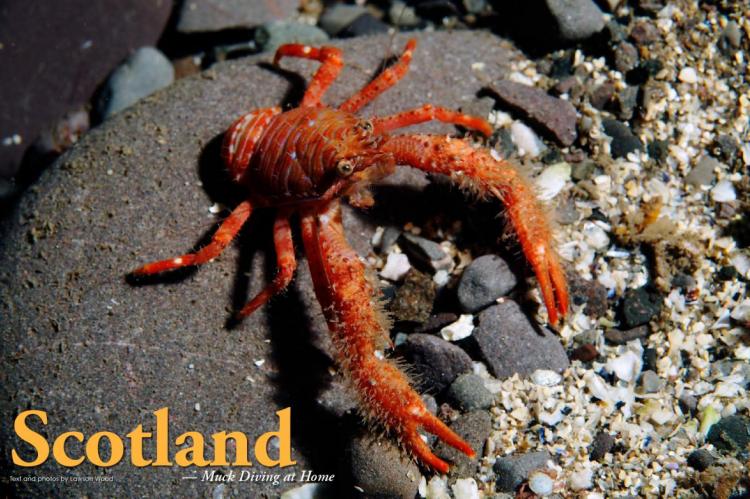
Originally published
X-Ray Mag #84
Is diving safe, Mike Ange asks ⏐ Brandi Muller goes to North Sulawesi, Thalassa Resort ⏐ Scottish muck diving ⏐ Oceanic Whitetip Sharks ⏐ Mark Powell: Permanent Change: When Have We Learnt ⏐ In Memoriam: Barb Roy Portfolio ⏐ Anemonefishes of the Indo-Pacific ⏐ Wrecks: The Demise of SMS Szent István ⏐ New species of Scorpionfish ⏐ How Octopus change their skin structure ⏐ Mike Bartick: The Snoot Method ⏐ Simon Pridmore: The Perimeter of Ignorance, ... and much much more

